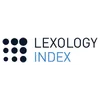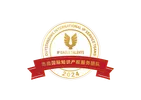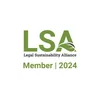Plausibility and AI – more hints from the EPO on what is needed to support a technical effect?

Key to the success of a European patent application which seeks protection for an AI-focused invention is the demonstration of a technical effect. #
However, one issue, especially for the early-stage innovator, is that the AI model has often not been trained and implemented, so it is not always possible to provide all of the data that can support the technical effect.
This may be problematic as it can undermine inventive step, which is often demonstrated using technical effect, and sufficiency, which is demonstrated based on the guidance provided in a patent application.
G 2/21 and Technical Effect #
G 2/21 provided guidance on what can be used to support a credible technical effect and supports the possibility that post-published data can be used to support a technical effect, provided the data supports a technical effect which is consistent with what is provided in the application as filed. This has, in summary, been the approach which has been applied by EPO technical boards in multiple decisions since G 2/21, especially T 873/21, T 1551/22 and T 1994/22.
Applying G 2/21 to Software Inventions #
Recently, the EPO looked at support for inventive step on a software invention in decision T 687/22. This related to occlusion cancellation in hearing devices. G 2/21 was cited in the decision, confirming its relevance to assessing technical effect of software inventions.
Specifically, the EPO cited reasons from G 2/21, which set out that: #
“The technical problem must be derived from effects directly and causally related to the technical features of the claimed inventions. An effect could not be validly used in the formulation of the technical problem if the effect required additional information not at the disposal of the skilled person even after taking into account the content of the application in question.”
The EPO developed this further by confirming that a technical effect associated with the distinguishing features of the invention must be identified on the basis of the claim wording to establish a credible objective technical problem. That they have used the phrase “on the basis” indicates again that the technical problem must be based on what is in the application as filed (using features which are part of the claims), even if post-published data can be introduced.
This decision does not really say anything different from what has gone before, in terms of the application of G 2/21, but it does confirm its relevance to software inventions.
What’s Next for AI Patents and Technical Effect? #
AI patent applications are treated very similarly to more general software applications and this decision gives us more guidance on how much we can rely on that post-published data if necessary. That is, post-published data can be relied upon, but the technical effect must still be identified based on the claim wording.
Moving forward, it would be interesting to look at the limits to what post-published data can be used. Is there a time limit, for instance? What does “at the disposal of the skilled person” mean?
We will continue to look at the development of this theme with regard to AI-focused patent applications.
Have questions or ready to get started? Talk to our team today, we're here to help.




















